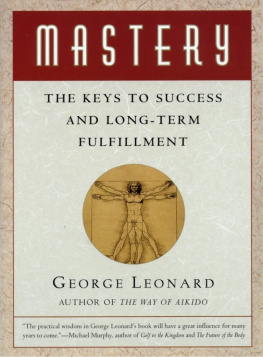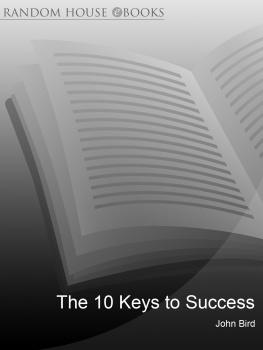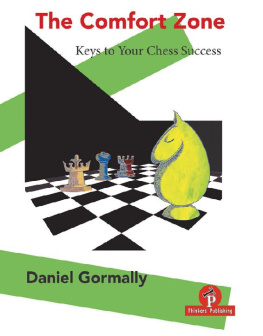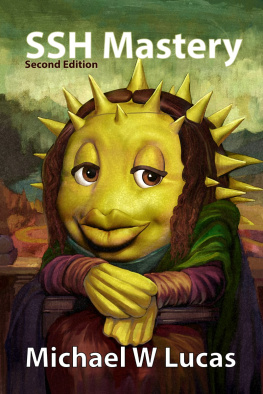George Leonard - Mastery - The Keys To Success And Long-Term Fulfillment
Here you can read online George Leonard - Mastery - The Keys To Success And Long-Term Fulfillment full text of the book (entire story) in english for free. Download pdf and epub, get meaning, cover and reviews about this ebook. year: 2013, genre: Romance novel. Description of the work, (preface) as well as reviews are available. Best literature library LitArk.com created for fans of good reading and offers a wide selection of genres:
Romance novel
Science fiction
Adventure
Detective
Science
History
Home and family
Prose
Art
Politics
Computer
Non-fiction
Religion
Business
Children
Humor
Choose a favorite category and find really read worthwhile books. Enjoy immersion in the world of imagination, feel the emotions of the characters or learn something new for yourself, make an fascinating discovery.
- Book:Mastery - The Keys To Success And Long-Term Fulfillment
- Author:
- Genre:
- Year:2013
- Rating:3 / 5
- Favourites:Add to favourites
- Your mark:
- 60
- 1
- 2
- 3
- 4
- 5
Mastery - The Keys To Success And Long-Term Fulfillment: summary, description and annotation
We offer to read an annotation, description, summary or preface (depends on what the author of the book "Mastery - The Keys To Success And Long-Term Fulfillment" wrote himself). If you haven't found the necessary information about the book — write in the comments, we will try to find it.
Mastery - The Keys To Success And Long-Term Fulfillment — read online for free the complete book (whole text) full work
Below is the text of the book, divided by pages. System saving the place of the last page read, allows you to conveniently read the book "Mastery - The Keys To Success And Long-Term Fulfillment" online for free, without having to search again every time where you left off. Put a bookmark, and you can go to the page where you finished reading at any time.
Font size:
Interval:
Bookmark:
Life Lessons from an American Sensei
A classic statement of aikido's philosophy and its translation to everyday activities. Deeply felt, beautifully written, and filled with insights about our largely hidden potentials, this book will take its place among the great and lasting works about the martial arts in relation to life in general." Michael Murphy, author of Golf in the Kingdom
The Way Of Aikido does no less than open the door to the universe and invite you through to become one with it, to become balanced, powerful, energetic, alert, and present. You don! need to be a martial artist to love this book." Susan Trott, author of The Holy Man and Crane Spreads Wings
A lively and intimate account of the way in which a martial art became a path of life." Sam Keen, author of Fire in the Belly and Hymns to an Unknown God
An extraordinary book, uniting the mystical and practical, the one and the many, with new possibilities that capture the imagination. It is compassion in action." Dean Omish, M.D., author of Love & Survival and Dr. Dean Orntsh s Program for Reversing Heart Disease.
George Leonard is the author of numerous books on human possibility and social change, including Education and Ecstasy, The Transformation, The Ultimate Athlete, The Silent Pulse, Adventures in Monogamy, and The Way of Aikido. He is the president of the Esalen Institute, and founder of Leonard Energy Training (LET), a practice inspired by aikido. Mr. Leonard lives in northern Califomia.

PLUME
Published by the Penguin Group
Penguin Books USA Inc., 375 Hudson Street, New York, New York 10014, U.S.A.
Penguin Books Ltd, 27 Wrights Lane, London W8 5TZ, England
Penguin Books Australia Ltd, Ringwood, Victoria, Australia
Penguin Books Canada Ltd, 10 Alcorn Avenue, Toronto, Ontario, Canada M4V 3B2
Penguin Books (N.Z.) Ltd, 182-190 Wairau Road, Auckland 10, New Zealand
Penguin Books Ltd, Registered Offices: Harmondsworth, Middlesex, England
Published by Plume, an imprint of Dutton Signet, a division of Penguin Books USA Inc. Previously published in a Dutton edition.
First Plume Printing, February, 1992
30 29 28 27 26 Copyright George Leonard, 1991
All rights reserved.
REGISTERED TRADEMARK MARCA REGISTRADA
Printed in the United States of America Original hardcover design by Eve L. Kirch Without limiting the rights under copyright reserved above, no part of this publication may be reproduced, stored in or introduced into a retrieval system, or transmitted, in any form, or by any means (electronic, mechanical, photocopying, recording, or otherwise), without the prior written permission of both the copyright owner and the above publisher of this book.
BOOKS ARE AVAILABLE AT QUANTITY DISCOUNTS WHEN USED TO PROMOTE PRODUCTS OR SERVICES. FOR INFORMATION PLEASE WRITE TO PREMIUM MARKETING DIVISION, PENGUIN BOOKS USA INC., 3 7 5 HUDSON STREET, NEW YORK, NEW YORK 1 0 0 1 4.
For John and Julia Poppy
Heartfelt appreciation goes to Esquires editor emeritus Phillip Moffitt for his wise counsel and generous support, and for his empassioned and enduring advocacy of this book; he speaks with the authority of one who is himself on the path of mastery.
I owe a great deal to my aikido teachers, Frank Doran, Robert Nadeau, and Bill Witt, and especially to Nadeau, who introduced me to the idea of presenting exercises based on aikido principles to a wider, nonmartial arts constituency. Richard Strozzi Heckler, Wendy Palmer, and I have been doing aikido together for eighteen yearsfirst as students, then as teachers and co-owners of Aikido of Tamalpais: But we are more than fellow martial artists, for our lives touch in many Ways; Richard and Wendy are part of this book. Annie Styron Leonard has once again been a loving critic and a perceptive editor.
Thanks to master tennis teacher Pat Blaskower for her eloquence on the particulars of the mastery process, as presented in Chapter One, and to Joe Flower, who conducted interviews on the subject of mastery with leading sports figures. Im grateful, as always, to Sterling Lord, an intrepid pathnder for twenty-five years.
A special word of thanks goes to John and Julia Poppy, to whom this book is dedicated. John and I have been colleagues and friends for twenty-eight yearsat Look magazine, at Esquire, and actually in all things. He has contributed immeasurably to each of the Ultimate Fitness features, bringing a rare intelligence, elegance, and clarity to the most difcult subjects. The light that is Julia Poppy, my sister, has illuminated my path for a lifetime, and her spirit has touched everything Ive done. This book would not be possible without them both.
In 1987, for the fourth straight year, the May issue of Esquire magazine featured a special section on what it called Ultimate Fitness. These special sections claimed a broader charter than is usual for such a subject. Ultimately, I Wrote in the first of the series, fitness and health are related to everything we do, think and feel. Thus what we are calling Ultimate Fitness has less to do with running a 2:30 marathon than with living a good life.
The previous Ultimate Fitness specials had enjoyed exceptionally high reader interest, but the May 1987 number was something else again. The subject this time was mastery, the mysterious process during which what is at first difficult becomes progressively easier and more pleasurable through practice. The purpose of the feature was to describe the path that best led to mastery, not just in sports but in all of life, and to warn against the prevailing bottom-line mentality that puts quick, easy results ahead of long-term dedication to the journey itself.
The response was immediate and extravagant. Requests for extra copies, tearsheets, and reprints poured in. Management newsletters requested permission to reprint portions of the Esquire feature. Corporate CEOs gave photocopies to their officers. Training groups of a wide variety spent hours discussing the mastery principles. Letters to the editor were numerous and eloquent. A navy carrier pilot, for instance, wrote that he had been having trouble landing the F-14 Tomcat on an aircraft carrier. I was in the process of making a second and perhaps final attempt when I bought the May issue. Insights that I gained from Mr. Leonards outline of the masters journey gave me the extra 10 percent of mental discipline that I needed to make the trek down this portion of my path a relatively easy one.
I knew a book was needed to provide a full understanding of how to get on and stay on the path of mastery, but at the time, I was working on a memoir of the 1960s. I thought interest in the subject might wane, but it hasn't. The many comments and inquiries that I continue to receive have convinced me more than ever that the quick-fix, fast-temporary-relief, bottom-line mentality doesnt work in the long run, and is eventually destructive to the individual and the society. If there is any sure route to success and fulfillment in life, it is to be found in the long-term, essentially goalless process of mastery. This is true, it appears, in personal as well as professional life, in economics as well as ice skating, in medicine as well as martial arts.
It was the martial arts, in fact, that gave me the original idea for the Esquire feature and for this book. I have practiced aikido since 1970, and have taught it regularly since 1976. With its sophisticated blending moves and full repertory of rolls and falls, aikido is generally known as the most difficult of the martial arts to master. On the training mat, every attempt at circumvention or overreaching is revealed; flaws are made manifest; the quick fix is impossible. At the same time, the pleasures of practice are intensified. The mat, I often tell my students, is the world, but it is the world under a magnifying glass. An aikido school is therefore an ideal laboratory for studying the factors that work for and against long-term learning. As hundreds of students passed through our school, I began to recognize distinctive-patterns in the way they approached the art. The types of learners I would later characterize as the dabbler, the obsessive, and the hacker (see Chapter Two) revealed themselves, in most cases, after only a few classes. I was surprised to discover that it wasnt necessarily the most talented who would persevere on the long road to black belt and beyond. I began to realize that although different people might take different paths to mastery, all of the paths led in the same general directionone that could be clearly mapped.
Font size:
Interval:
Bookmark:
Similar books «Mastery - The Keys To Success And Long-Term Fulfillment»
Look at similar books to Mastery - The Keys To Success And Long-Term Fulfillment. We have selected literature similar in name and meaning in the hope of providing readers with more options to find new, interesting, not yet read works.
Discussion, reviews of the book Mastery - The Keys To Success And Long-Term Fulfillment and just readers' own opinions. Leave your comments, write what you think about the work, its meaning or the main characters. Specify what exactly you liked and what you didn't like, and why you think so.












